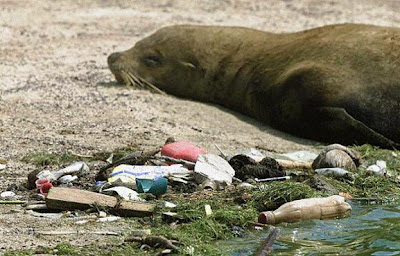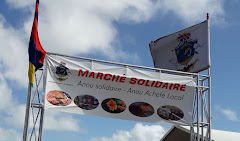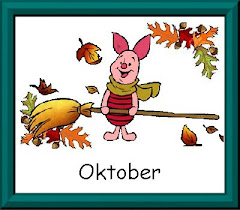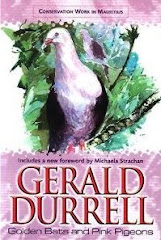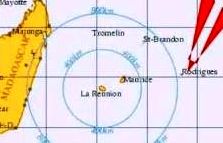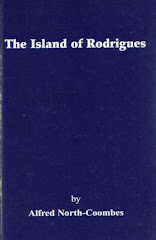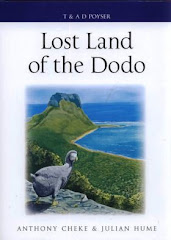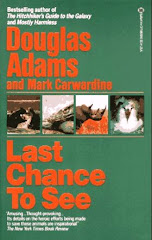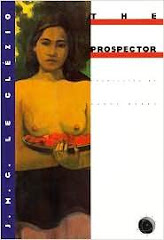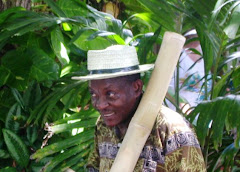Menschen haben ihren Müll schon immer auch in die Ozeane gekippt...-
Historically Man has always dumped his trash also into the oceans...
 "Nur wir Menschen erzeugen Abfall, den die Natur nicht verdauen kann."
"Only we humans make waste that nature can’t digest.”
"Nur wir Menschen erzeugen Abfall, den die Natur nicht verdauen kann."
"Only we humans make waste that nature can’t digest.”
Charles Moore,
- the man who discovered the Great Pacific Garbage Patch -
photo source
Plastikmüll hat einen erheblichen Einfluß auf die Umwelt, im wesentlichen auf Lebewesen im Meer und an Küsten. Es gibt drei zentrale Einflüsse auf das marine Ökosystem:
Verfangen
* Mindestens 267 Arten sind bekannt, Kunststoff als Nahrung aufgenommen oder sich darin verfangen zu haben
* Einige Arten von Robben und Seelöwen waren bis zu einer Rate von 7,9% vom Verfangen betroffen
* Ein UNEP-Bericht schätzt, dass jährlich rund 130.000 Wale und Delfine in Fischernetzen gefangen werden
Transport von invasiven Arten
* Der Anstieg der Abfälle im Meer, insbesondere von Kunststoffen hat zu einer entsprechenden Zunahme invasiver Arten geführt
* Menschengemachter Abfall hat zu einem deutlichen Anstieg der Möglichkeiten für den Transport gebietsfremder Arten geführt
* "Biotische Vermischung" als Folge menschlicher Aktivitäten verbreitet sich zusehends als Problem
* Die harten Oberflächen von Plastikteilen stellen ein attraktives und alternatives Substrat für eine Reihe von Organismen dar.
Die Einführung nicht-endemischer Arten kann katastrophale Auswirkungen auf einheimische Arten und die biologische Vielfalt haben, die Zunahme synthetischen und biologisch nicht abbaubaren Mülls wird den Prozess beschleunigen
Plastic Pollution is having a significant environmental impact particularly on marine life and coastlines.There are three major impacts on marine ecosystems:
Entanglement
* At least 267 species have been known to have ingested or become entangled in plastic
* Entanglement rates of up to 7.9% have been discovered in some species of seals and sea lions
* A UNEP report estimates that around 130,000 cetaceans are caught in nets each year
Ingestion
* Over 100 species of sea birds are known to ingest plastic artefacts
* Around 95% of Fulmars have plastic in their stomachs that affect them in chemical and mechanical ways
* 31 species of marine mammals are known to have ingested marine plastic
According to the UN Environment Programme, plastic debris causes the deaths of more than a million seabirds every year, as well as more than 100,000 marine mammals and sea turtles.
Transport of Invasive Species
* The increase in marine litter, in particular plastics has resulted in a corresponding increase in species invasion
* Man-made litter has resulted in a significant increase in the opportunities for the transportation of alien species
* ‘Biotic mixing’ as a result of human activities is becoming a widespread problem
The hard surfaces of plastic debris is providing an attractive and alternative substrate for a number of organisms. The introduction of non-endemic species can have a catastrophic impact on indigenous species and biodiversity and the increase in synthetic and non-biodegradable material pollution will accelerate the process (source)
Nicht alles Plastik treibt. 70% des Plastiks im Meer sinkt zum Grund. In der Nordsee kommen rund 110 Plastikteile auf jeden Quadratkilometer Seebett.Das macht 600 000t Plastikmüll allein in der Nordsee und tötet am Grund lebende Arten -
Not all plastic floats. In fact around 70 percent of
discarded plastic sinks to the bottom. In the North Sea, Dutch
scientists have counted around 110 pieces of litter for every square
kilometre of the seabed, a staggering 600,000 t in the North Sea
alone. These plastics can smother the sea bottom and kill the marine
life which is found there.
Die Opfer -The victims
Korallen, Quallen, Fische, Vögel und Säugetiere...

Image
courtesy Algalita Marine Research
Foundation
"Even tiny
jelly-fish and other filter feders frequently consume or become tangled
in floating trash."
Photo:Allessio Viora/Marine Photo Bank
Sun Fish and Manta Rey entangled in net
Photo: David Fleetham
Rainbowrunner
source
Ingestion of plastic particles by fish that forage on plankton at night on the ocean surface is widespread. "In trawls, a total of 660 fish, representing six species, were captured for future study. Of these fish, 35 percent had ingested micro-plastic particles, the record holder having 83 fragments."
The Turtles
.kl.jpg)

86% of sea turtles ingest or become entangled in plastic.
A turtle found dead in
Hawaii had over a thousand pieces of plastic in its stomach and
intestines.
The Birds
The more common sight ...
source
170
kinds of land animals and birds
have been recorded in a study who were injured by plastics washed up on British beaches.
Great Blue Heron
Even if the animals swim into plastic hoops when they are young, as
they grow, the animals can die from complications, the hoops restricting
their breathing as they grow.
" This unfortunate Californian pelican probably became entangled in
the bag by mistaking the floating plastic for food and diving on it,
spearing it in such a way that the bag has lodged around the pelican’s
neck."
Trapped and dead in the mesh of a net
photo source
Not only plastic:
cigarette butts were found in the stomachs of fish, birds, turtles, whales and terrestrial mammals. One butt, consisting of 4000 harmful substances, can pollute 40 to 60 l of fresh water.
Nicht nur Plastik, auch Zigarettenkippen werden oft im Magen-Darm-Trakt von Fischen, Vögeln, Walen, Meeresschildkröten und Landsäugetieren gefunden.
4,5 Billionen (4.500.000.000.000) Zigarettenstummel werden im Jahr weggeschmissen.
Bis zu 4.000 schädliche Stoffe sind in einer Zigarettenkippe zu finden. Eine einzige Kippe kann zwischen 40 und 60 Liter sauberes Grundwasser verunreinigen.(source)
Möwen in Texel/ North Sea island
Photo: Güven Purtul
 Kure-Atoll Albatross
source
Many seabirds and their chicks have been found dead, their stomachs filled with medium sized plastic items.
Kure-Atoll Albatross
source
Many seabirds and their chicks have been found dead, their stomachs filled with medium sized plastic items.
"Syringes, cigarette lighters and toothbrushes
have been found inside the stomachs of dead seabirds, which mistake them
for food.A study of the albatross at the Midway Atoll, a seabird rookery between
Japan and Hawaii, found that of the 500,000 chicks born each year,
200,000 die of starvation and dehydration, their stomachs filled with
plastics. 5 tons of plastic are fed by the parent albatross to their
young each year at the atoll alone."
Chris Jordan traveled to the
Midway Islands,
near the heart of the
Pacific Trash Gyre, to photograph the decomposed
bodies of chicks that have been fed plastic litter by confused parents.(
source)
Chris
Jordan
These are the actual stomach contents of
this baby bird in one of the world's most remote marine sanctuaries.
Chris
Jordan
Chris Jordan reiste zu den
Midway-Inseln/Nordpazifik, um die Leichen von Küken, die von verwirrten Eltern mit Plastikteilen gefüttert
wurden, zu fotografieren. Jedes Jahr sterben von 500000 Küken bis zu 200000 durch Verhungern, Ersticken und den Folgen toxischer Substanzen.Allein in diesem Atoll werden 5 t an Plastik jedes Jahr von Albatross Eltern verfüttert.
MARINE MAMMALS
Dugongs
source
Dugongs have become entangled and drowned in certain types of nets, fishing and shark nets have already caused a lot of deaths among these endangered animals.
Dugongs can only hold their breath for a maximum of eight minutes, and
will drown quickly once entangled in a net. Beside net entrapment, the decrease of seagrass in quantity and quality due to pollution is the main threat for dugongs.(more).
Gladstone/Queensland
10 dugongs, 231 turtles and six dolphins have died in Gladstone between January 1 and October 18 2011, in the area meant to be a dugong reserve, "only" 3 dugongs and 38 turtles were found dead in 2010. Vets were not able to determine the cause of death in 10 out of 13 dugongs.A dredging project had been approved and there are strong reasons to connect the deaths with the changes in water qualitity (
more)
Dolphins & Whales
Rope on dolphin
"Stranded whales and dolphins are often found with plastics packed inside their stomachs or blocking their guts.In 2000, a Bryde's whale died on a Cairns beach, with an autopsy finding the whale's stomach tightly packed with 6sqm of plastic." (source)
"Plastic bags have been recorded "in the Bay of Biscay/Western Europe
over 120 miles from shore in waters over 4,000 meters in depth. Beaked
whale species in particular are highly susceptible to swallowing plastic
bags as they are believed to strongly resemble their target prey,
squid. Other species of large whales, which take large mouthfuls of
water during feeding, also take in plastic bags by accident and hence
are also at risk.”
"...a rare Gervais beaked whale was found on a
beach in Puerto Rico with ten pounds (4.5kg) of twisted plastic in its
stomach. The plastic caused the whale to starve to death. It was a
juvenile female, and was emaciated due to not eating for many days.
....another beaked whale died after ingesting a
single plastic bag because the chemicals reacted badly with the whale’s
internal organs.
In April 2010
Discovery News reported that a grey whale near
Seattle was washed ashore after it died. The contents of its stomach
included 20 plastic bags, small towels, *surgical gloves, sweat pants,
plastic pieces, duct tape, and a golf ball."
(source)
* Zu medizinischem Abfall/
about medical waste more here & here & here
source
A juvenile Humpback whale entangled in marine debris off the coast of
Western Australia
source
Sea lions and Seals
Galapagos
Photo source
Sea lions are extremely vulnerable to all kind of marine debris, pollution and fishing expansion.

Photo:Phillip Colla
source

Strapped by monofilament line.

Photo source
Studies in the Pribilof Islands have shown a significant number of fur
seals, particularly juvenile males, entangled in floating marine debris
from trawl nets, plastic packing, and synthetic or natural twine.
(source)
source
In recent years about 400 entangled sea lions have been documented in
Southeast Alaska, although biologists believe the actual number is
higher. About half the animals have loops around their necks - mostly
hard plastic packing bands or heavy rubber loops made from inner tube
material. About half are caught in fishing gear. A few are tangled in
netting or rope, and one has an old tire stuck around its neck.
(source)
Photo:Alaska Department of Fish and Game
In a
recently
released study, Alaska’s Steller Sea Lion program spotted 386
animals that picked up some type of debris between 2000 and 2007.
source
A sub-adult male with a packing band around his neck
Packing bands cause more than 50% of neck entanglements of Steller sea lions in Alaska
A sea lion with packing band slicing into her neck , note: her pup is nursing her

source
A plastic band is wrapped tightly around the neck of
this seal. Many seals and sea lions are often strangled as their bodies
grow and tighten around the debris
Sea lions chase fish that have previously swallowed hooks, which
embed themselves in the marine animals, causing injury or death,
explains the video by
The Alaska Department of Fish and Game.
Although animal rescue workers were able to save the sea lion which had swum into a tyre, it was too late for one animal, after the windsock pinned her flippers to her body. (source)
Ringed Seal
LOOPED MATERIAL:
Some of the deadliest marine debris is likely to wrap around the neck of the sea lion or seal.
The materials that most commonly cause neck entanglements are:
Packing bands, large black rubber bands, rope/line, nets and Monofilament line
SWALLOWED
MATERIAL:
Swallowed material includes hooks, lures and line. These
can be “silent killers”, causing unseen injury and death from within.
Plastiktütenessende Eisbären in der Arktis sind ein eher seltenes Bild.
Polar bears eating a plastic bag in the Arctic seas is a rare sight...
Sorry, I have problems to trace the source of this image, I believe it might be from
Sergey Gorshkow
Doch schon lange sind Eisbären bekannt dafür, dass sie Müll nach Nahrung durchsuchen, sei es in der Nähe von Wohngebieten oder unweit militärischer Anlagen, während sie auf das Zufrieren ihrer Jagdgebiete warten, denn ihre eigentliche Nahrungsquelle ist die Ringelrobbe.-
But already for a long time, Polar bears are known to forage in waste dumped by humans either in residential or military areas while waiting for their hunting grounds to freeze. It is the Ringed Seal which is the preferred food of polar bears.

Habitatverlust durch Klimaerwärmung hat die Jagdzeit auf Ringelrobben verkürzt, Schadstoffe im Fett ihrer Beute sind zu einer weiteren Bedrohung ihrer Art geworden
Wissenschaftliche Studien haben nachgewiesen, dass in manchen Gebieten der Arktis Eisbären einem hohen Level von Giften und Umweltschadstoffen ausgesetzt sind.Auch radioaktive Belastung durch ausrangierte Reaktoren von U-Booten in der Russischen Arktis sowie das Dumping von Nuklearabfall (auch vorgekommen in Alaska) ist eine Zeitbombe.
Bereits seit 1993 befürchtete man einen Zusammenhang zwischen Schadstoffen und Geburtenrate.
So wurden sogenannte POPs (persistent organic pollutants) in sehr hohen Konzentrationen in Körpern von Eisbären aus Ostgrönland und den Svalbard-Inseln nachgewiesen, die die Fortpflanzungsfähigkeit beeintrachtigen.Weibliche Eisbären werden immer häufiger mit sowohl weiblichen als auch männlichen Sexualorganen gefunden, wobei hohe Level von PCBs (polychlorinated biphenyls) in ihrem Organismus bereits 1997 durch norwegische Forscher nachgewiesen wurden.Im Jahr 2000 betraf dies in Spitzbergen etwas mehr als 1 % der Eisbären, heute hat sich die Anzahl verdoppelt, auf 50 Eisbären in der Gegend von Svalbard kommt ein Hermaphrodit. Eine Studie in Grönland weist erhöhte OHC Funde bei Eisbären nach, deren Sexualorgane deutlich verkleinert sind.-
Scientific research shows that, in some areas, polar bears are exposed to high levels of poisons and pollutants.Their Arctic environment is widely contaminated by a number of persistent organic pollutants (POPs) such as polychlorinated biphenyls (PCBs) and chlordanes.Radioactive contamination is of potential concern in the Russian Arctic: reactors discarded from nuclear submarines, as well as dumping of nuclear waste (which has also occurred in Alaska).
Since 1993 there has been concern that pollutants were
causing problems for polar bear birth rates.
"POPs have been discovered in very high
concentrations in polar bears from East Greenland and Svalbard. In 1997,
Norwegian scientists found several hermaphrodite polar bear cubs with
high levels of PCBs (polychlorinated biphenyls) in their systems. About
one in 50 female bears on Svalbard has both male and female sex organs. In 2000 it was 1 % in Spitzbergen. A
study in Greenland found out recently that there is also a correlation
beween toxic waste caused by OHC pollutants and
shrinking sexual organs in
male and female polar bears." (source)
Die mit der Nahrung
aufgenommenen und durch Stillen von Jungtieren weitergegebenen
Schadstoffe beeinträchtigen Wachstum, Entwicklung, Reproduktion,
Verhalten und das Immunsystem source
2010 fand eine kanadische Studie heraus, dass auch die Knochen von Eisbären durch POPs betroffen sind mit chhronischer Osteoporose, die zu Knochenfrakturen und Deformierungen führen kann.-
In 2010, Canadian research found persistent contaminants (e.g. pesticides and flame retardants) are causing some wild polar bears to experience also degradation of their bones. Chronic osteoporosis leads to bone fractures and deformities.(source)

Die mit der Nahrung aufgenommenen und durch Stillen von Jungtieren weitergegebenen Schadstoffe beeinträchtigen Wachstum, Entwicklung, Reproduktion, Verhalten und das Immunsystem
source
Here a summary of WWF
"Persistent organic pollutants (POPs) include a wide range of poisonous substances such as heat resistant chemicals like PCBs, industrial by-products such as dioxins and furans which come from waste incineration; and pesticides like DDT, dieldrin and lindane. In addition to staying in the environment for a long time, POPs are a special concern because, as one animal eats another, these poisons are concentrated in fat and stored in vital organs in the animal that has eaten poisoned prey. As a top predator, polar bears are exposed to high levels of such pollutants through their food.
Due to the direction of prevailing winds and ocean currents, these substances are concentrated in parts of the Arctic. Most POPs are banned, but they are still used widely in Russia, eastern Europe, and Asia.
Long-range POPs currently represent the most serious pollution-related threat to polar bears.
Bears with high levels of some POPs have low levels of vitamin A, thyroid hormones, and some antibodies. These are important for a wide range of biological functions, such as growth, development, reproduction, behavior, and the ability to fight off diseases.
Newborn cubs are especially vulnerable to these pollutants. In some areas, the mother's milk on which they are totally dependent for growth and development, contains particularly high concentrations of these chemicals. The milk can actually poison the cubs, leading to lower survival rates.
Pseudohermaphroditism, a long word meaning that females have partially-developed male sexual organs, has been observed in 1.5 per cent of the polar bears sampled on Svalbard in recent years. Scientists believe this could be the result of long-range pollutants.
There are also reasons to worry about other pollutants. A wide range of new, man-made persistent substances are making their way to and are being concentrated in the Arctic. The effects of these are still unknown. In addition there are other pollutants that we know about, but that we are not studying due to lack of resources. These include both POPs and other contaminants, such as stain repellents known as PFOS, and brominated flame retardants. These may have similar impacts on polar bears as those already documented."(
source)

Loss of fur and skin lesions....
Erst vor kurzem wurde berichtet, dass in Alaska an rästelhaftem Haarausfall und nässenden Wunden leiden, wie auch Walrosse und Robben. Erst im Sommer starben 60 Robben.
Noch gibt es keinen Anhaltspunkt, was Ursache dieser Erkrankung ist.
(mehr)
The latest
Only recently polar bears in Alaska were discovered suffering from hair loss and infections, in the same region walrusses were observed with similar symptoms, and last summer 60 Ringed seals were found dead.Until now scientists have no clue about the origin of the disease. (more)
Sources:
Related:

.kl.jpg)
.jakekl.jpg)
.kl.jpg)
.kl.jpg)
.shoeskl.jpg)
kl.jpg)
kl.jpg)
.jkl.jpg)
kl.jpg)









.kl.jpg)



















